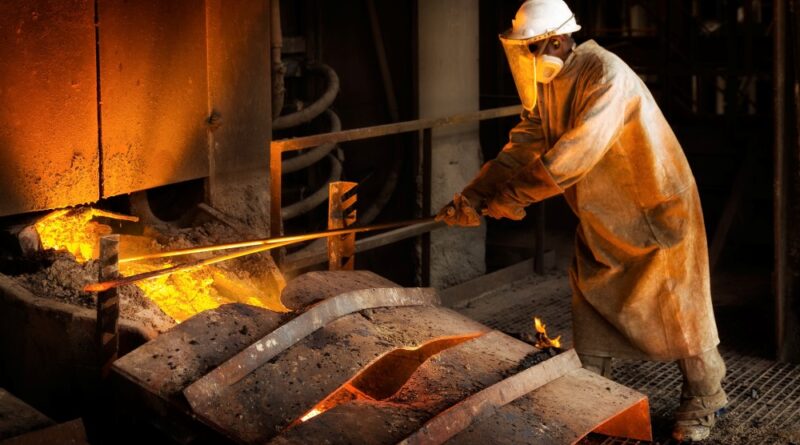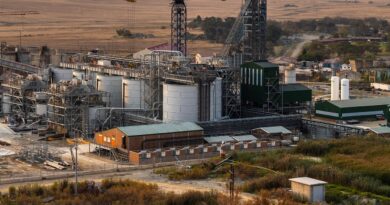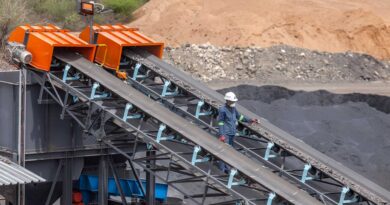Impala Platinum processing was limited by rebuild of Rustenburg’s furnace
While notable performances were achieved at the Group’s key mining and processing operations in FY2024, production volumes also benefitted from the maiden annual consolidation of Impala Bafokeng.
Tonnes milled at the Group’s managed operations increased by 17% to 27.89 million tonnes (FY2023: 23.88 million) and were up 1% on a like-for-like basis (excluding Impala Bafokeng), with higher milled volumes at Zimplats and stable tonnage at Impala Rustenburg offsetting the impact of rebased production volumes at Impala Canada and safety-impacted throughput at Marula.
6E milled grade rose 4% to 3.73g/t (FY2023: 3.60g/t) on the consolidation of higher-grade Impala Bafokeng volumes and improvements at Impala Rustenburg. 6E production at managed operations increased by 21% to 2.92 million ounces (FY2023: 2.42 million ounces), with like-for-like gains of 2%.
The Group’s JV operations increased 6E concentrate production by 1% to 547 000 ounces (FY2023: 541 000 ounces). Mimosa benefitted from plant optimisation but Two Rivers delivered lower volumes due to constrained mining flexibility from challenging geological conditions.
Third-party 6E concentrate receipts declined by 34% to 191 000 ounces (FY2023: 287 000 ounces) as two contracts terminated in Q3 FY2023.
In total, Group 6E production increased by 13% to 3.65 million ounces (FY2023: 3.25 million ounces) and was 1% lower on a like-for-like basis.
Refined 6E production, which includes saleable ounces from Impala Bafokeng and Impala Canada, increased by 14% to 3.38 million 6E ounces (FY2023: 2.96 million 6E ounces) and was 2% higher on a like-for-like basis.
Mining and processing performance benefitted from a notable reduction in the frequency and intensity of load curtailment in South Africa, but Zimbabwe experienced heightened electricity supply constraints. As a result, Implats estimates that production of c. 21 000 6E ounces was foregone across southern African managed and JV operations in the period, while a further 12 000 6E ounces was deferred (FY2023: 36 000 foregone and 101 000 deferred 6E ounces).
Group processing capacity was limited by the scheduled rebuild of the Impala Rustenburg’s Number 5 furnace in the period. Maintenance was initiated in December 2023 with the furnace successfully recommissioned as planned in April 2024.
All three furnaces at Impala Rustenburg were successfully rebuilt between FY2022 and FY2024, with excess concentrates and matte stockpiled for future refining and sale. Implats ended the period with excess inventory of approximately 390 000 6E ounces (FY2023: 245 000 6E ounces).
Group processing capacity will benefit from higher annual available capacity at Impala Rustenburg and will be bolstered by the commissioning of the new furnace at Zimplats in H1 FY2025. This will facilitate the steady release of excess inventory over the FY2025, FY2026 and FY2027 reporting periods.
Mining inflation, the maiden annual consolidation of Impala Bafokeng costs and the translation of the dollar cost base of Zimplats and Impala Canada offset the benefit of volume gains and cost containment measures delivered at managed operations.
Group stock-adjusted unit costs increased by 5% to R20 922 per 6E ounce (FY2023: R19 834) and were 3% higher on a like-for-like basis (excluding Impala Bafokeng and the discretionary employee bonus payment).
Capital expenditure at managed operations rose by 22% to R14.0 billion (FY2023: R11.5 billion) as annual spend at Impala Bafokeng was consolidated in the period and expenditure on growth projects at Zimplats accelerated, offsetting reduced capital expenditure at Impala Rustenburg, Impala Canada and Marula.




